Want to protect and showcase your product in the simplest way? Wrap them in plastic film! This is generally considered among the most straightforward and cost-effective packaging solutions. At first glance, these plastic films all look the same, but they actually differ in some aspects.
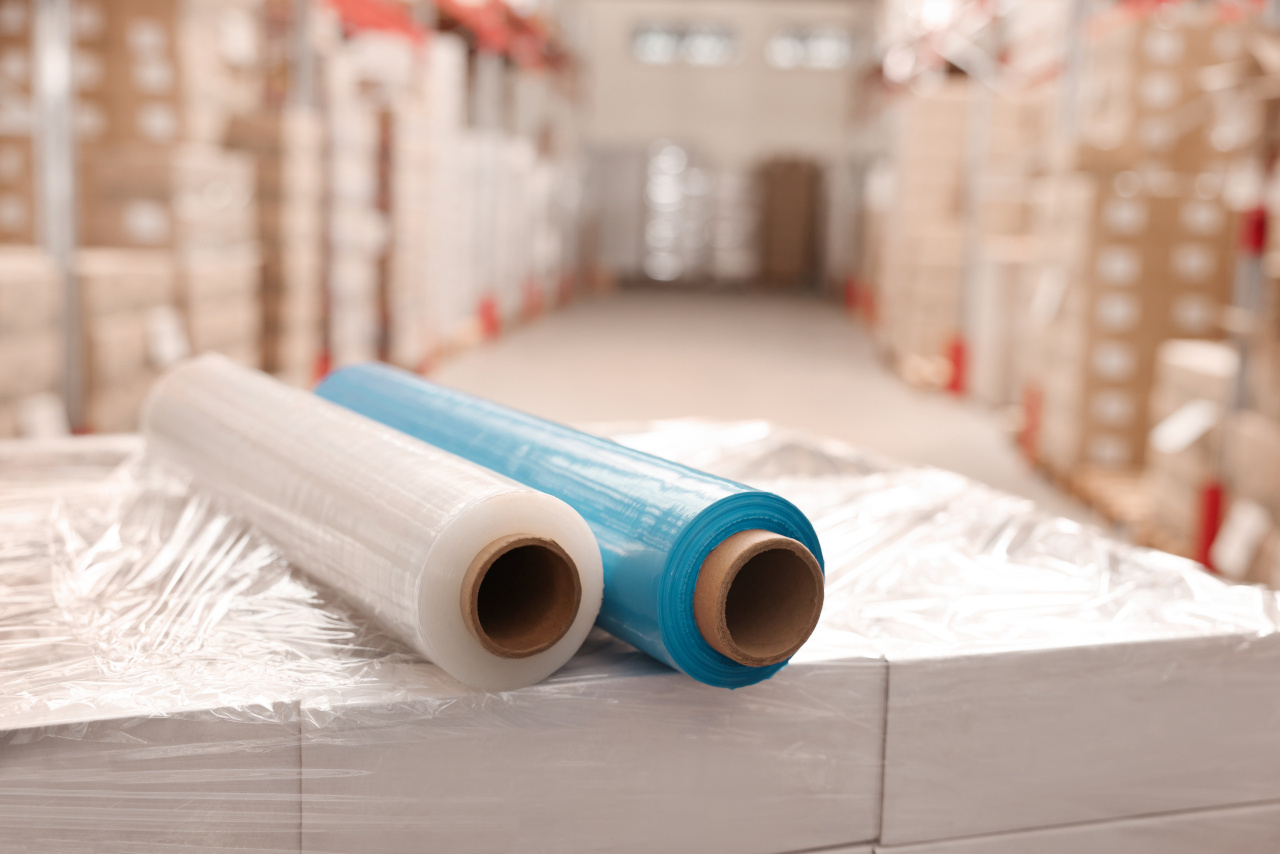
Two popular packaging film options are stretch film and shrink wrap. Both have their own features, which means they may not be equally effective for your specific packaging needs. So, knowing the difference between stretch film and shrink wrap can help you choose the right packaging for your product. Let’s find out!
Stretch Film vs Shrink Wrap: Definition
What Exactly Is Stretch Film?
Stretch film is a highly elastic plastic. It wraps tightly around multiple products to hold them together as a single unit. The film is typically used to bundle multiple items with a pallet for shipping or storage. Sometimes, it can even stretch up to five times its own length. That said, it’s ideal for handling large, bulky items.
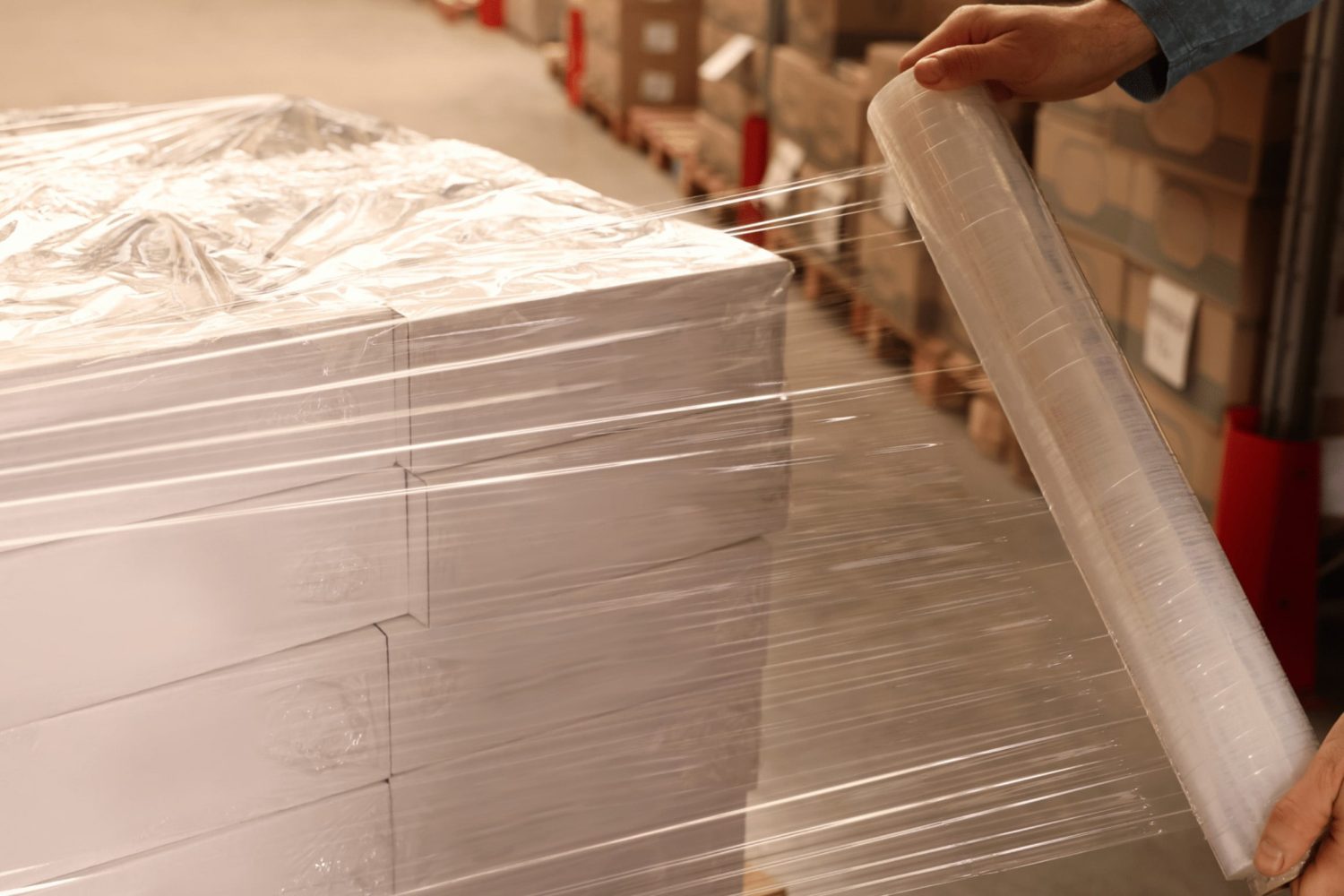
Stretch wrapping can be handled manually or using specialized equipment. It requires no heat to tighten the film, relying instead on the film’s natural tension and cling properties. Stretch film is usually clear. This makes the packaged items visible and scannable.
What Do You Know About Shrink Wrap?
Shrink wrap is another kind of plastic film. It relies on heat to get the packaging job done. When this film is exposed to heat, it shrinks to create a snug covering over individual products or bundles of items. Unlike the stretch wrap that is stretched upon application, this film is applied loosely at first and then heated until it tightly conforms to the object’s shape.
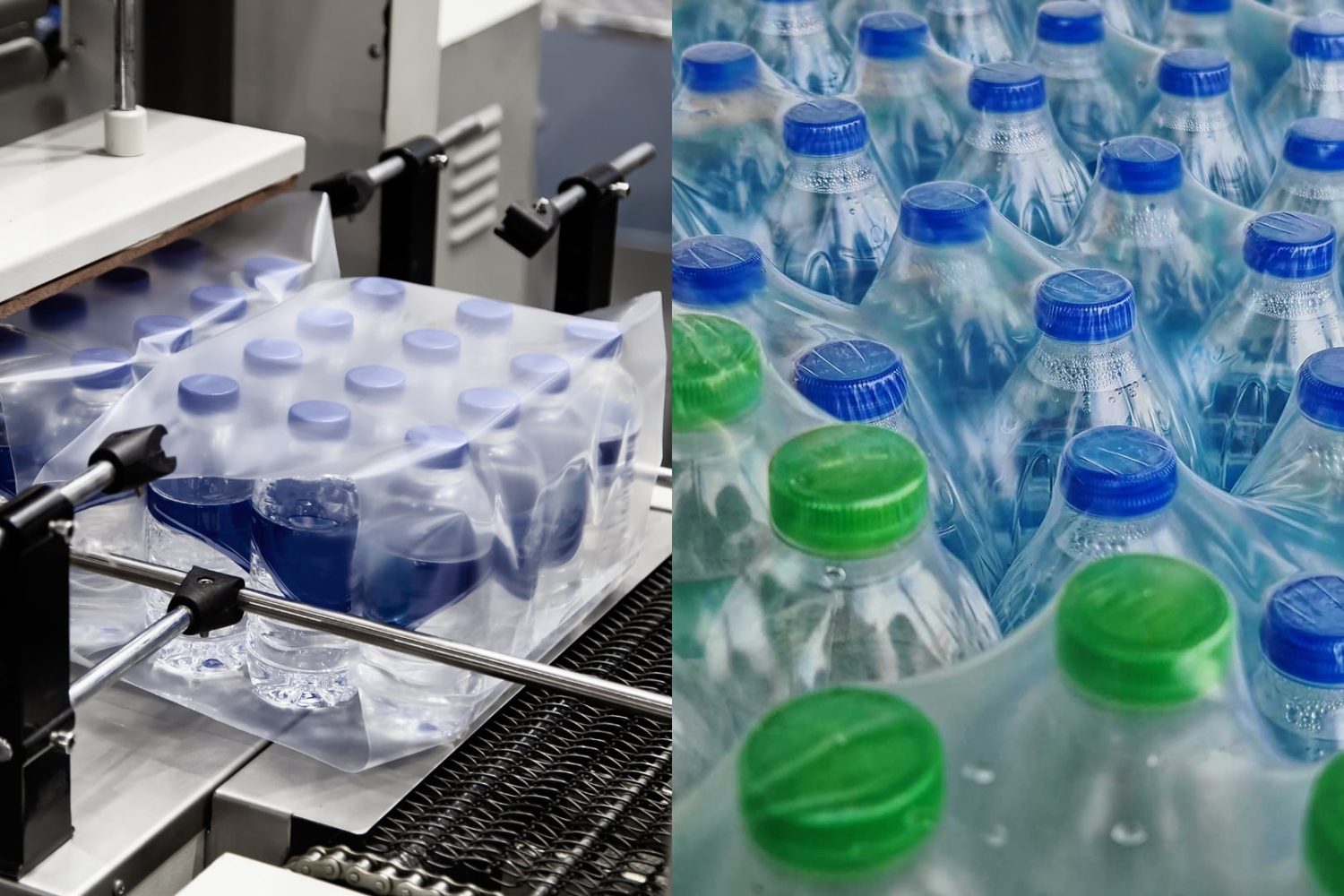
The tight wrap can only be created by heat. Heat guns and shrink tunnel machines are the most common tools to create this type of packaging. Shrink wrap is effective at protecting items from moisture, dust, and tampering. Since it keeps products intact and clean, this film is frequently used for retail packaging.
Stretch Film vs Shrink Wrap: Composition
What Materials Are Used to Make Stretch Film?
Stretch film is typically made from LLDPE, a type of plastic in the full name of linear low-density polyethylene. The raw material comes in tiny resin pellets. These pellets are melted and then formed into thin, stretchy sheets.
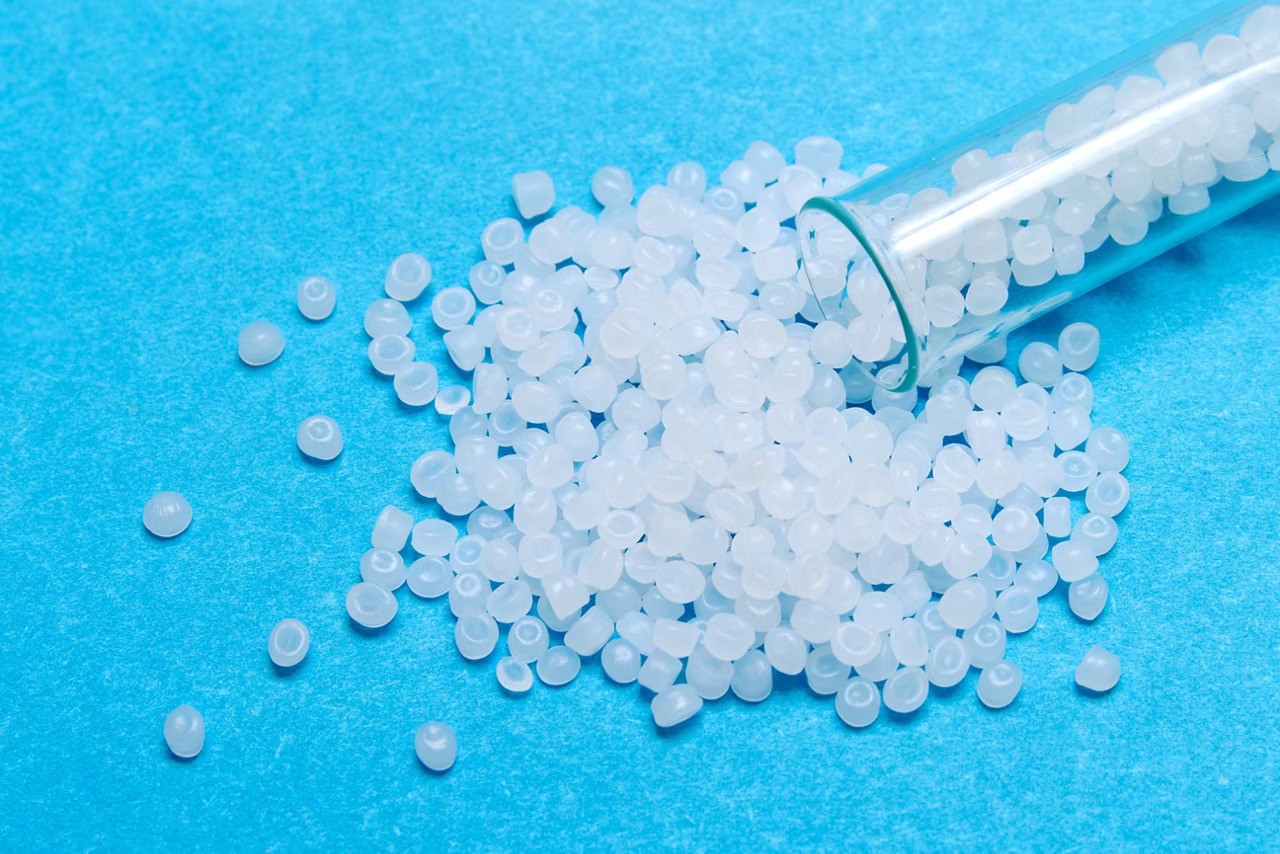
Based on different manufacturing processes, the formed film can be made more or less stretchy, clear or hazy, thicker or thinner, and sticker or smoother. Stretch film is highly resistant to tear and puncture, so it can wrap heavy loads of all shapes and sizes.
What Raw Materials Are Used in Shrink Wrap?
Shrink wrap is usually made from polymers like polyolefin, polyethylene, or PVC. Manufacturing of this film also starts with resin pellets. These resin beads are melted down and formed into thin sheets or tubes.
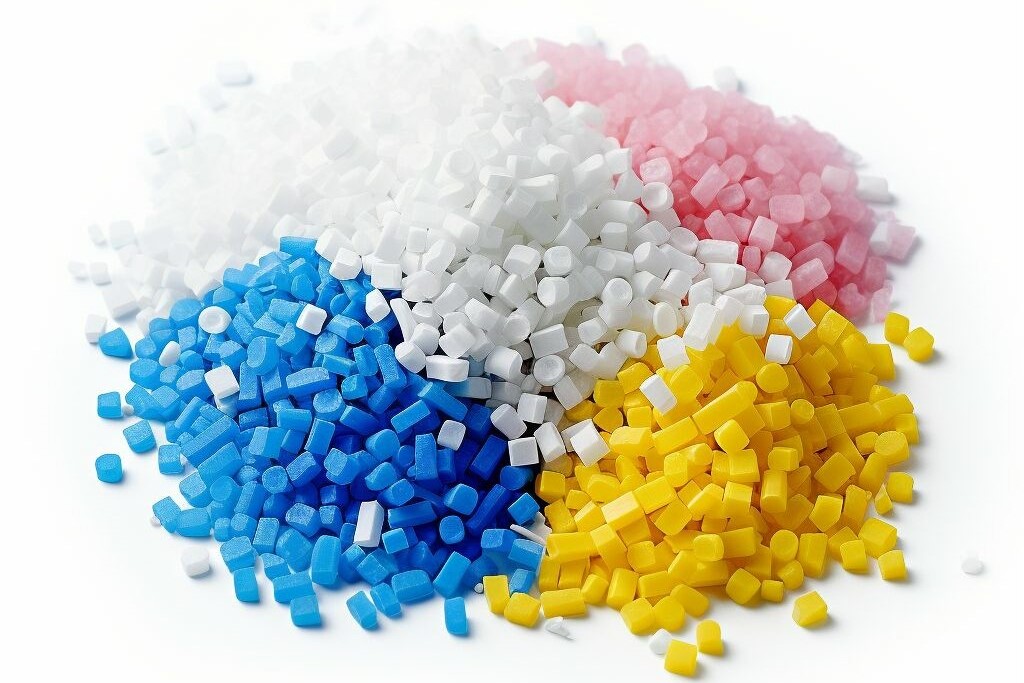
Different raw materials give the finished shrink film different properties. Some are more durable, and others are safer for products. So manufacturers should pick the one best suited for the products they want to package.
Stretch Film vs Shrink Wrap: Types
What Types Of Stretch Film Are Available?
When it comes to stretch film, there are several types, each designed for specific applications and challenges. Here’s a breakdown to help you get familiar with them:
First off, stretch film can be classified into two main categories based on how you apply it. They are:
Hand Stretch Film
Hand stretch film is your everyday go-to option for wrapping items manually. Lightweight and super flexible, as the name suggests, it’s easy to use without any special equipment. This type of film is favored by businesses with low to moderate packaging demands. Plus, if you’re about to wrap odd-shaped or smaller loads, the film is a solid choice.
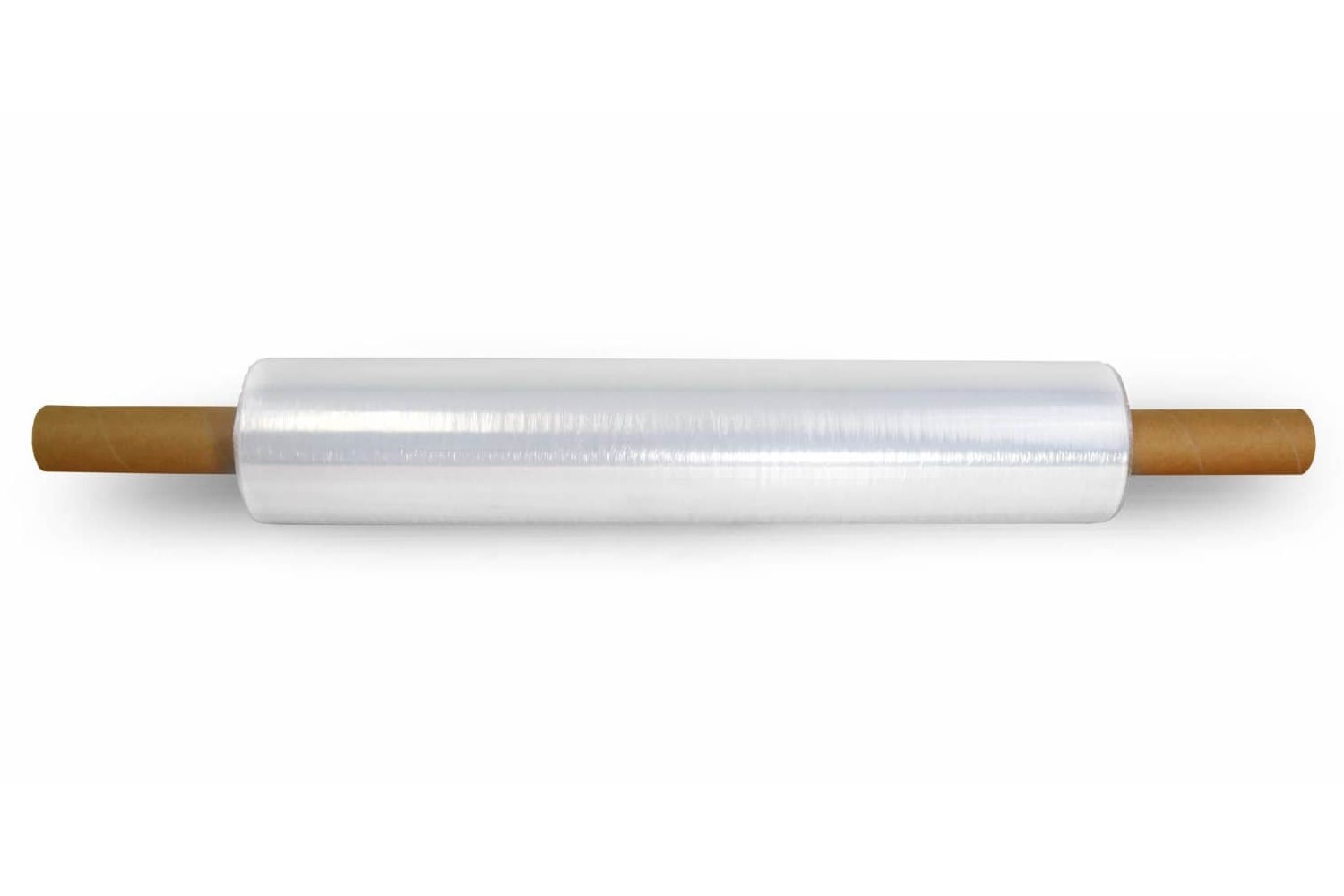
- Thickness: Generally available in 50-100 gauge to facilitate easy handling.
- Stretchability: Has a lower stretch ratio (150-300%), making it easier to apply manually.
- Load Capacity: Suitable for light loads. Often used for household or small business applications.
- Core Size: Generally has a size of around 1 inch.
- Cost: Usually more cost-effective for low-volume operations.
Machine Stretch Film
Machine stretch film steps in when you need consistency and speed. Unlike the hand-applied version, this type is used with stretch wrap machines, making it a favorite for large-scale packaging operations. The film can stretch multiple times its own length. Plus, it’s designed to be compatible with different types of wrapping machines, like turntable or orbital wrappers.
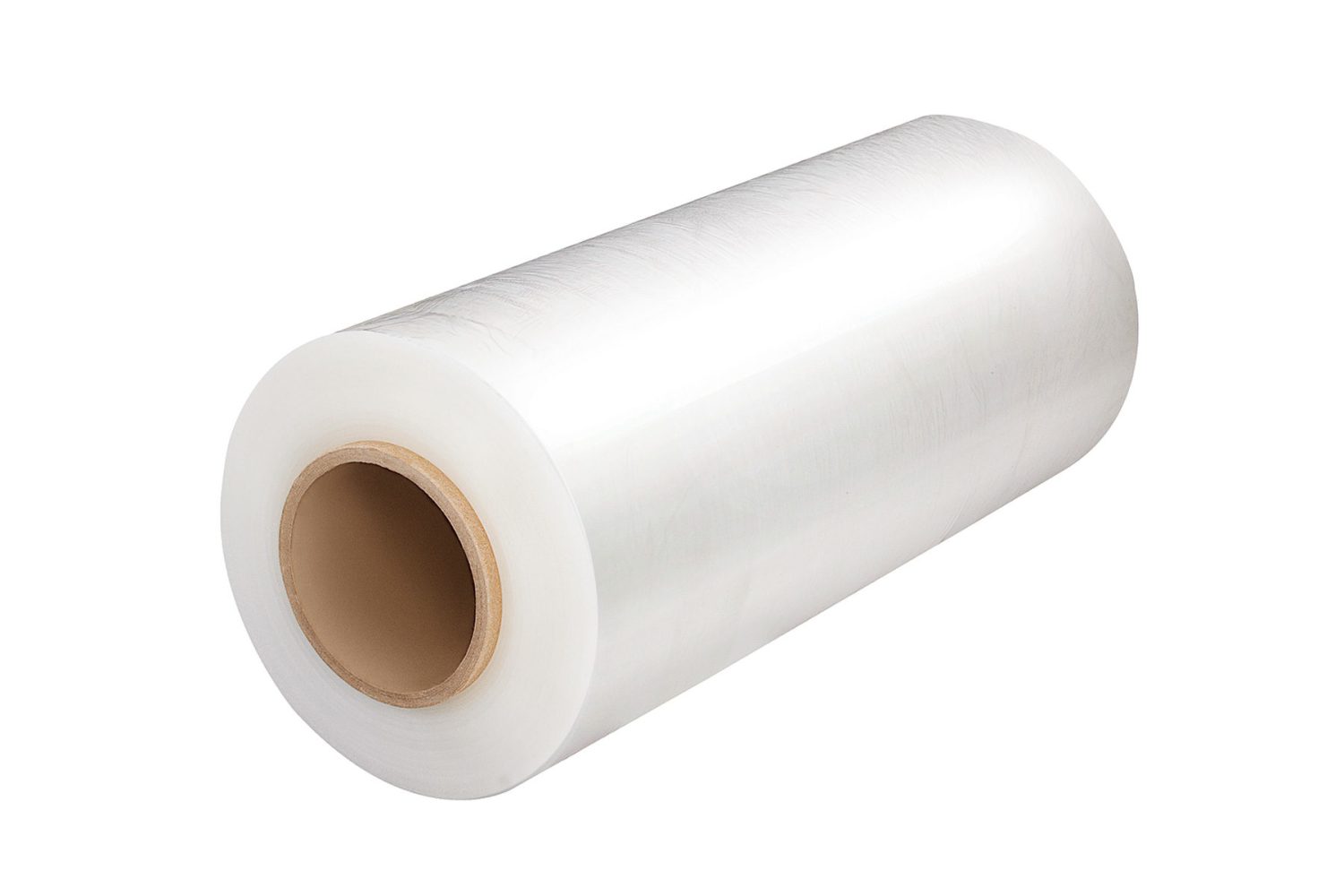
Thickness: Usually thicker (60-120 gauge or more) to withstand the rigors of machine wrapping.
Stretchability: Stretches up to 400% or more, allowing for better load retention and stabilization.
Load Capacity: Designed for heavier loads and industrial applications.
Core Size: Often comes with 3 inches to fit wrapping machines.
Cost: More efficient for high-volume applications.
Based on how the film is manufactured, there are two other types available. They are:
Blown Stretch Film
This type is made by extruding resin into a tube and then blowing up the tube of molten resin like a bubble. The bubble expands and cools and finally turns into a film. This method gives the film a tougher structure. Need to wrap items with sharp edges or odd shapes? This film can handle it. Plus, it has excellent cling properties, ensuring your load stays secure during transport.
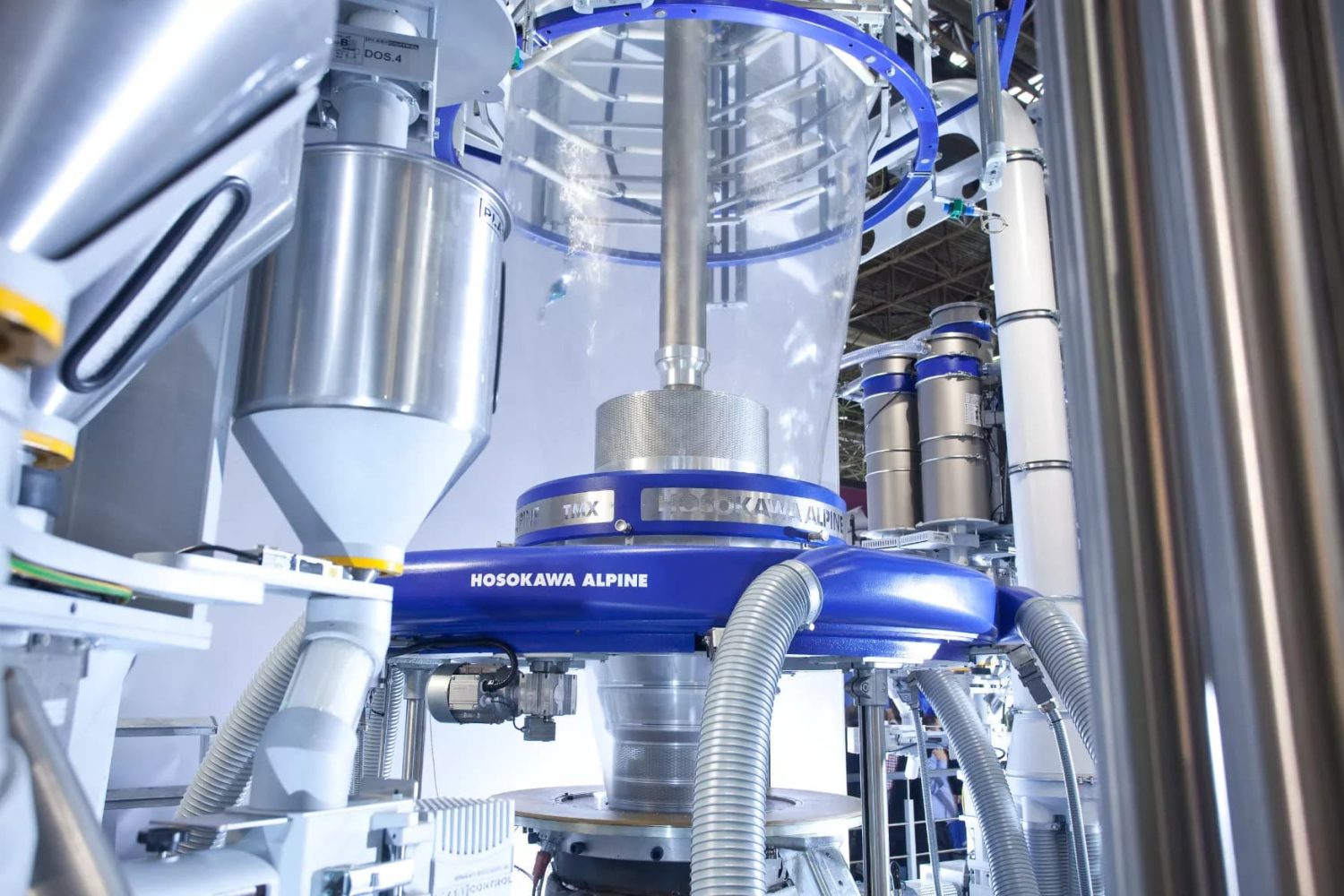
- Thickness: Usually 60-120 gauge or more, suitable for heavy-duty applications.
- Stretchability: Can achieve higher stretch ratios (up to 400% or more).
- Clarity and Appearance: Generally less clear and may have a matte finish.
- Puncture Resistance: Excellent. Ideal for heavy-duty loads and oddly -shaped items.
- Cost: Typically more expensive due to the manufacturing process and material strength.
Cast Stretch Film
This type is created by extruding resin pellets through a flat die and cooling it on a roll. The cast stretch film is super clear. If you want to identify products without unwrapping the pallet, this film is perfect. It’s also quieter when being used, which is a plus if you want to keep noise levels down in your workplace.
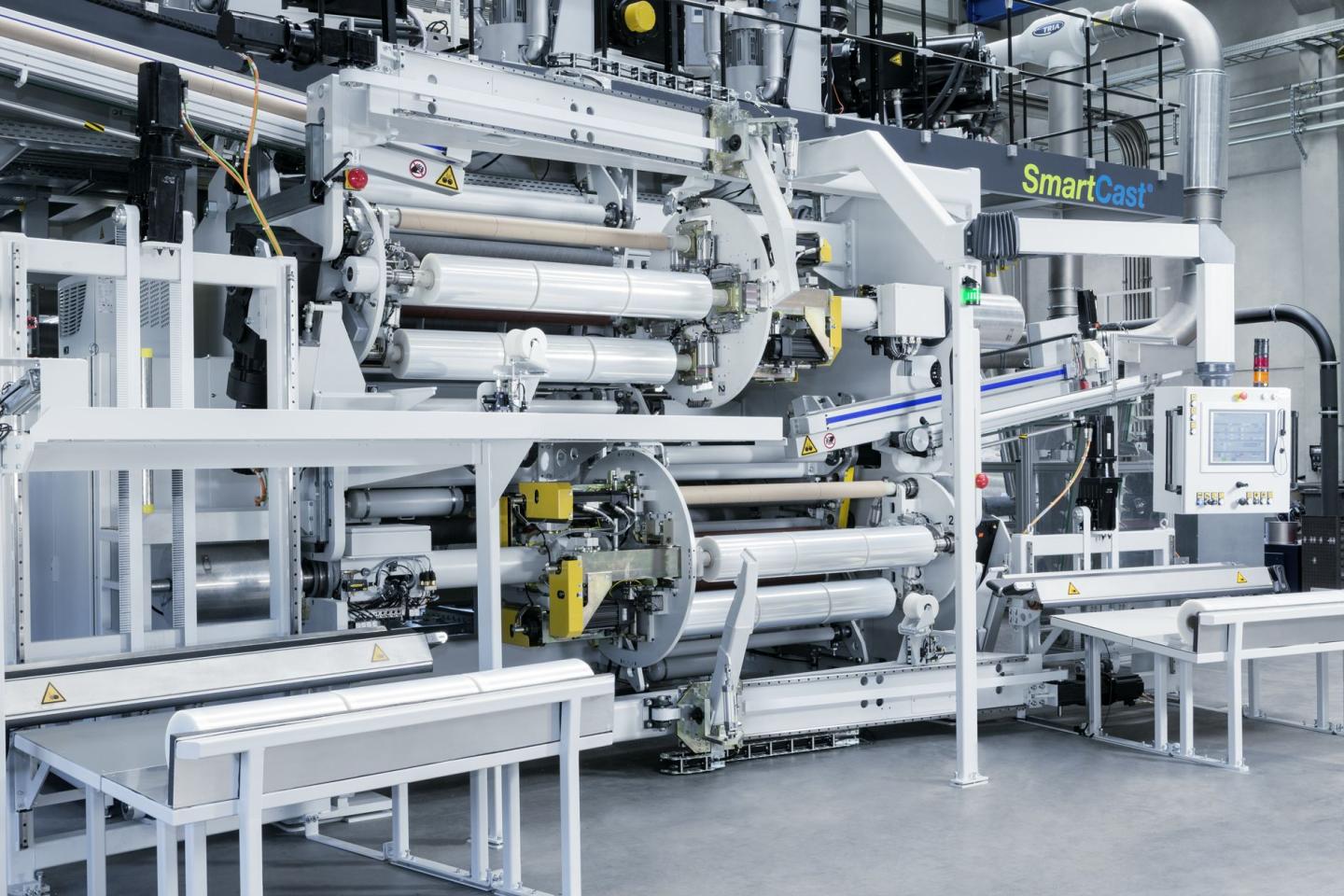
Thickness: Generally available in thinner gauges (30-100 gauge).
Stretchability: Can stretch up to 300%.
Clarity and Appearance: Offers superior clarity and typically has a glossy finish.
Puncture Resistance: Moderate puncture resistance, suitable for light to medium loads.
Cost: Usually more economical for lighter applications.
What Varieties of Shrink Wrap Can You Find?
Shrink wrap also comes in various types. If you’re wondering about what they’re best for, let me walk you through it.
Polyolefin (POF) Shrink Wrap
Polyolefin, or POF, is a superstar in the shrink film world. Flexible and durable, it lends a beautiful, glossy finish to the packaged items. It works well for irregularly shaped items. When heated, it doesn’t leave a strong odor. It’s worth mentioning that the FDA approves the use of POF shrink wrap for direct contact with food. That said, it’s perfect for wrapping food items, like baked goods or frozen products.
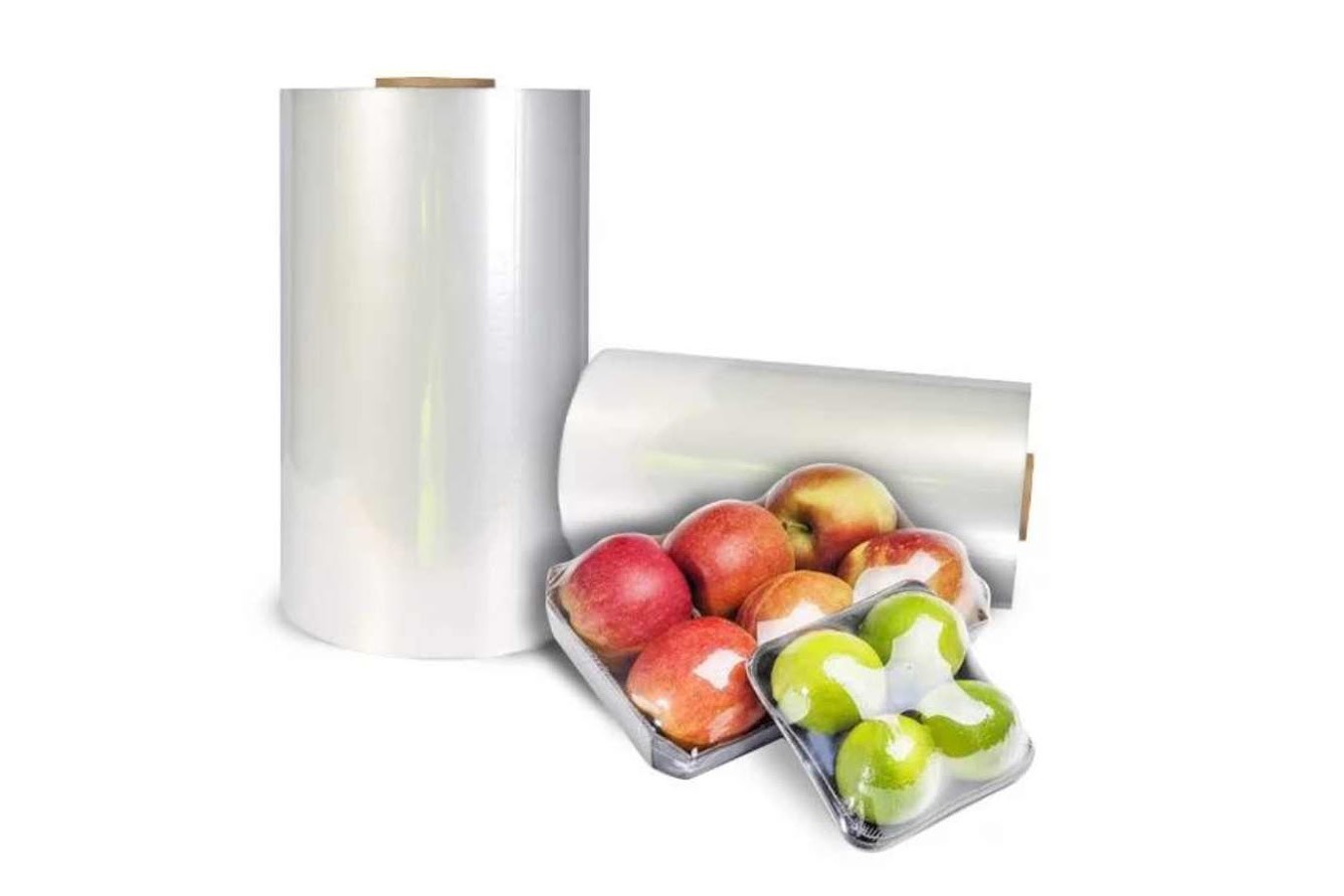
Shrink Properties: Shrinks at lower temperatures, typically around 250°F (121°C). Provides a tight and secure fit.
Clarity and Appearance: Super clear with a glossy finish.
Strength: Excellent tensile strength.
Durability: Features exceptional resistance to punctures and tears.
PVC Shrink Wrap
PVC (polyvinyl chloride) shrink film used to be the go-to material for packaging. It’s still widely used in non-food applications. Strong, clear, and affordable, this type is a popular choice for retail packaging. The downside is PVC can become brittle in cold conditions. Compared to other films, it’s not as eco-friendly and produces a strong, toxic smell when heated.
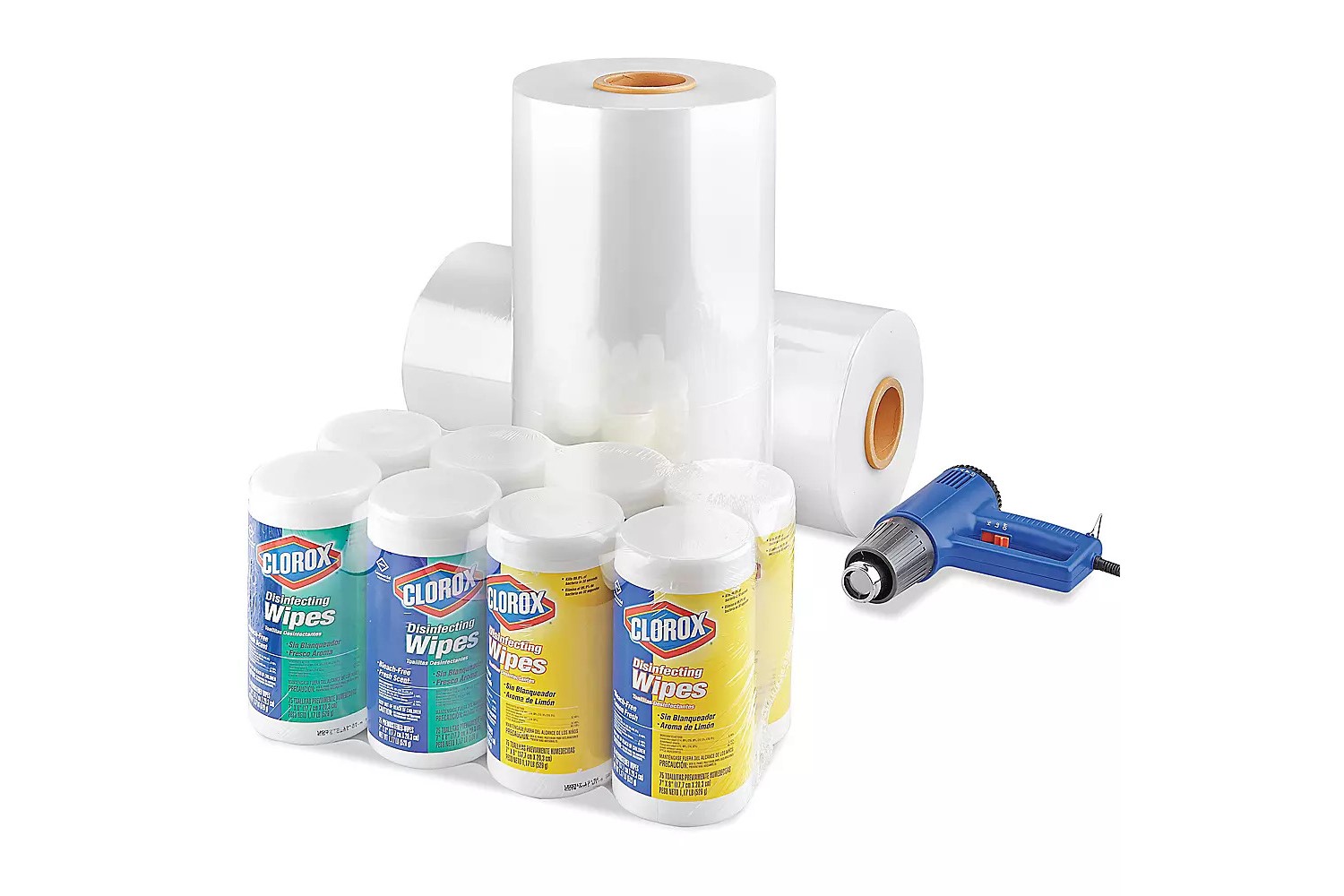
- Shrink Properties: Shrink temperature is usually around 200°F (93°C).
- Clarity and Appearance: Very clear with a high-glossy look.
- Strength: Strong but less flexible than POF.
- Durability: Durable but can become brittle over time.
Polyethylene (PE) Shrink Wrap
This type can be used for both stretch film and shrink wrap. It typically has three forms: High-density polyethylene (HDPE), Linear Low-density Polyethylene (LLDPE), and Low-density Polyethylene (LDPE). Usually, LDPE is used for shrink wrapping. PE shrink wrap is the champion when it comes to bundling and wrapping large or heavy items. It’s thicker and stronger than POF or PVC, making it ideal for big jobs.
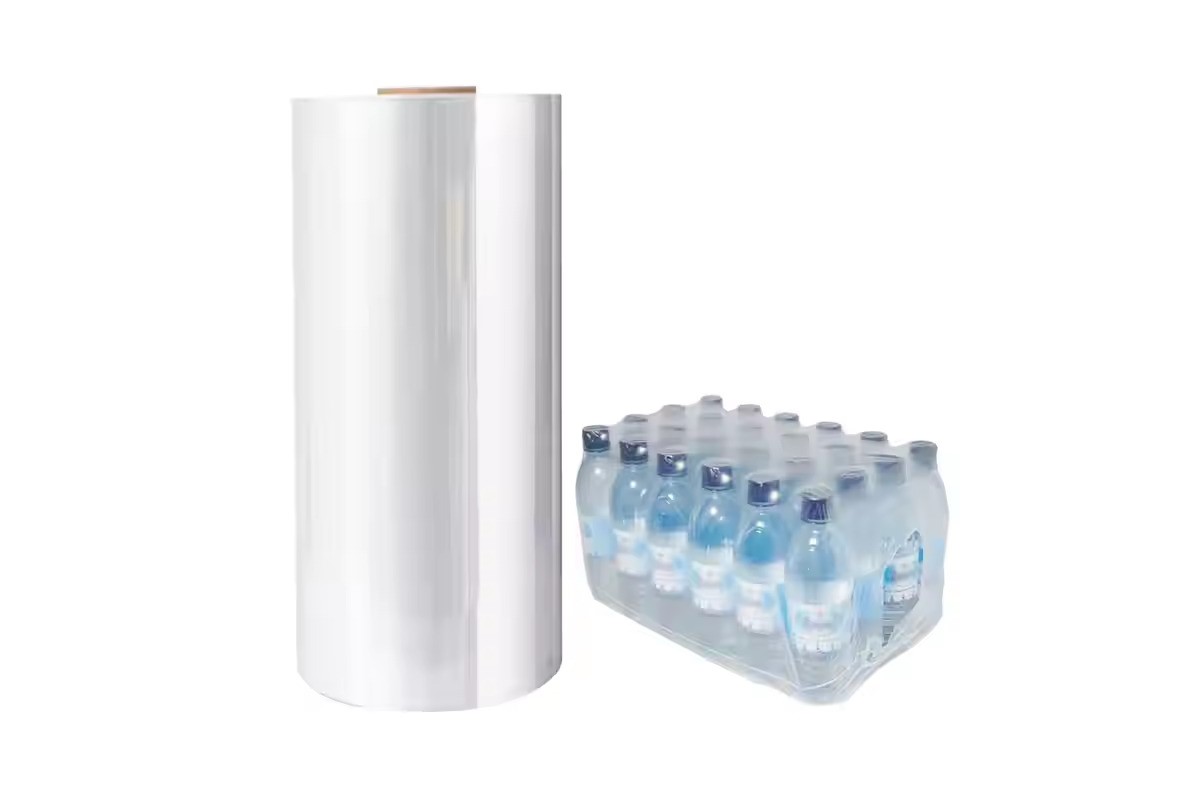
- Shrink Properties: Shrinks when heated to between 180°F and 220°F (82°C and 104°C). May not be as tight as other films.
- Clarity and Appearance: Less clear with POF and PVC, often more opaque. Has a matte finish.
- Strength: Varies by density; LDPE is more flexible, while HDPE is stronger.
- Durability: Very tough and resistant to impact.
Stretch Film vs Shrink Wrap: Pros and Cons
Both stretch film and shrink wrap have their own unique advantages and limitations. Let’s take a closer look at what they bring to the table.
Pros of Stretch Film
- Can be used for a variety of applications, working well with irregularly shaped loads and different pallet sizes.
- Cost-effective. Often uses less material compared to shrink wrap, especially for large loads.
- Wraps quickly since it doesn’t require any heat source.
- Provides excellent stability for loads during transport.
- Recyclable and sustainable, ideal for Eco-conscious businesses.
Cons of Stretch Film
- Unable to fully protect against moisture, dust, or UV rays.
- Manual wrapping can be labor-intensive, causing increased expenses.
- Lacks aesthetic appeal compared to shrink wrap.
- Can loosen over time. Less suitable for long-term storage needs.
Pros of Shrink Wrap
Comes in a variety of options. Can be clear, colored, printed, and customized for branding.
Gives items a professional and polished look, great for retail applications.
Shields against environmental factors, suitable for outdoor or long-term storage.
Ensures a tight fit around items, preventing movement during storage or transport.
Holds its seal and maintains durability over time.
Cons of Shrink Wrap
Requires a heat gun or shrink tunnel for the shrinking process.
Tends to be more expensive than stretch film.
Might require extra care when wrapping irregular shapes.
Takes more time compared to the faster process of using stretch film.
Less cost-effective due to added costs in equipment and operator’s training.
Stretch Film vs Shrink Wrap: Equipment
So, how do you apply stretch film or shrink wrap? While the stretch film can be used manually, you need a handy tool to package heavy loads or bulky items, not to mention shrink wrapping always requires the help of machinery.
What Tools Do You Need To Use Stretch Film?
Stretch Wrapping Machines: For larger volumes, turntable-style or orbital wrappers are often used to handle most of the work. They spin or move around the load, wrapping it consistently and securely. It saves you time and ensures that you get a uniform wrap each time.
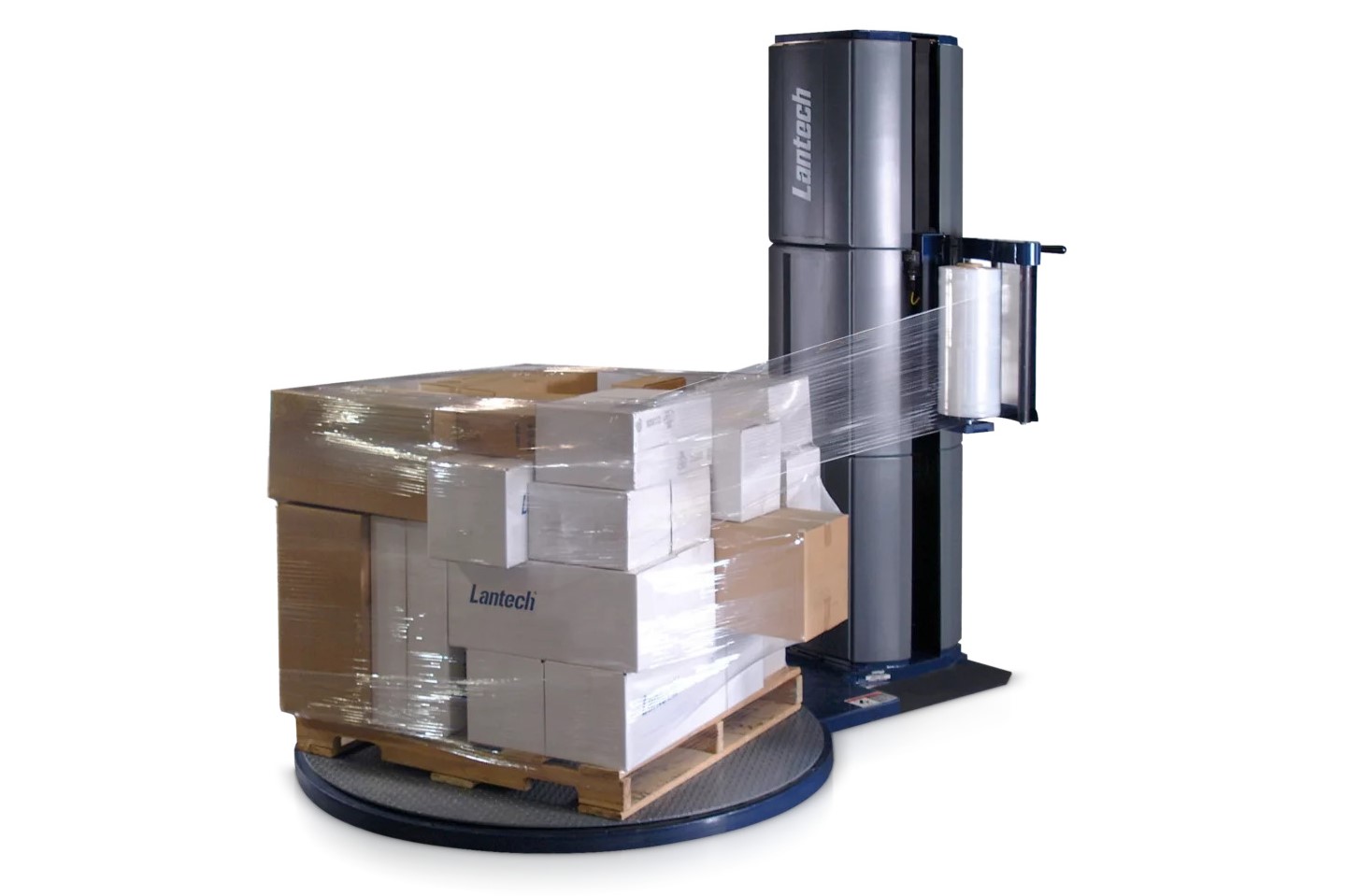
What Devices Are Used To Apply Shrink Wrap?
Heat Sealers (L-Bar Sealers): Before you apply heat, you’ll need to cut and seal the film around your product. L-bar sealers are commonly used because they quickly form a neat, sealed pouch of shrink film.
Heat Tunnels or Heat Guns: Once the product is sealed inside the film, applying heat causes it to shrink and conform tightly to the item’s shape. A heat tunnel is often used for larger volumes, providing even heat distribution. A handheld heat gun can be used for smaller runs or more delicate jobs.
Stretch Film vs Shrink Wrap: Applications
Now, let’s talk about when it’s best to use stretch film vs shrink wrap. Understanding the right situation for each can really help you make smarter packaging choices.
When Should I Opt For Stretch Film?
Securing Pallets or Large Bundles: If you’re shipping or storing multiple items stacked together—like boxes on a pallet—stretch film is your go-to choice. Its elasticity and cling properties allow it to hold everything in place without the need for heat.
No Specialized Equipment Available: Stretch film can be applied manually. The wrapping process can be time-consuming, but it’s a great way to stay on track with deadlines, especially when you don’t have any tools handy.
Easy Visibility of Contents: Stretch film is usually clear. It allows you to see what’s underneath when you need to know the information about the items. This helps identify the items quickly and scan barcodes easily.
When Do I Use Shrink Wrap?
Retail-Ready Packaging: If you want a simple yet professional-looking package to show off your product on store shelves, go for the shrink wrap. Once heated, it hugs every contour, creating a neat and polished appearance.
Protecting Individual Items: Unlike the stretch film that works well for bundling multiple items, shrink wrap excels in forming a tight seal for single units. The tight film helps keep out dust, moisture, and tampering. It’s ideal for packaging food items, electronics, toys, or bottled beverages.
Compact, Hygienic Wrapping: The shrink wrap actually creates a tight seal around the items. The sealed film keeps them clean and secure. If you want to keep your products fresh, safe, and presentable all the way to your customers, this is a great choice.
Final Thoughts
Both stretch film and shrink wrap play important roles in packaging. Each has its own perks and best uses. By getting to know the differences between these two materials, you can make informed decisions that fit your packaging needs.
Whether you’re trying to keep products safe during shipping or want to showcase them nicely on shelves, knowing when to use stretch film or shrink wrap can elevate your packaging game and ensure your items arrive in great shape.